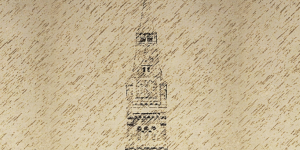Georgetown’s complicity in slavery can now be physically traced back to the 1700s through recently discovered artifacts.
The Maryland State Highway Administration conducted a dig this October that uncovered the earliest physical evidence of Jesuit slave-owning near a 17th century Jesuit manor in Newtowne Neck State Park, St. Mary’s County, about 50 miles south of Washington D.C. Although the dig was not university-affiliated, the artifacts, which included ceramics and clay pipe stems, connect Jesuit historical records of slave-ownership to the 1838 sale of 272 enslaved people, the profits paying Georgetown’s debts off.
Georgetown’s relationship with slavery extends back to the 17th century, when Jesuit priests started constructing missions using enslaved labor. The land at Newtowne Manor Jesuit Plantation, the Jesuit plantation that was the site for the dig, was acquired in 1668, serving as the earliest archeological evidence of the Jesuit’s enslavement practices. For decades, writings like Father H.W. Beschter’s accounts of Jesuit treatments of slaves have helped tell the story of Georgetown’s connections with slavery, and the recent discovery provides physical proof to support these narratives.
The dig is part of the Maryland Rediscovery 400 project, which attempts to uncover and explain South Maryland history. Metal detectors helped identify the locations of buried cabins, where archaeologists hypothesize enslaved people lived. Ground-penetrating technology illuminated the outline of a palisade, chimney, and a door, adding credibility to the hypothesis.
Inside the old slave quarters were the remains of broken clay tobacco pipes, ceramic cups and rusty nails. Archeologists also discovered a pit they believe stored trash, including shards of 17th English pottery and animal bones. The findings come at a critical time in Georgetown’s struggle for racial justice and attempts to reconcile with its racist past.
The Jesuits founded several Catholic educational institutions, including Georgetown, but struggled financially. Ultimately, in 1838, the Jesuits sold 272 slaves for approximately $3.3 million in today’s currency as an attempt to resolve some of their debt, including 57from the Newtowne plantation. Now known as the GU 272, the enslaved people were separated from their families and forcibly relocated to plantations in Louisiana.
However, this did not mark the end of Jesuit slave ownership. Enslaved persons remained at Newtowne, and Jesuits kept slaves until the Emancipation Proclamation of 1863.
The ties between Jesuit education and slavery have not been forgotten by the university, its staff, or its students. In 2015, Georgetown established the Working Group on Slavery, Memory, and Reconciliation to spread awareness of this history and helped create the Georgetown Slavery Archive, an online repository of materials and documents relating to the university and the Jesuits’ history with slavery.
Members of the working group are still active, and in 2019, President John DeGioia created a set of advisory boards that focus on academic research initiatives, public research memorialization, and community and public engagement. The groups help develop programming and honor D.C. Emancipation Day.
Georgetown also has worked with the community of the descendants of Jesuit slaves. In 2016, the university granted preferential admission to the descendants, and has since hosted several events to build a dialogical process between the community and Georgetown.
Georgetown students have also been proactive in their attempts to combat the university’s history of racial injustice. In 2019, students passed the GU 272 Referendum, which called on the university to add $27.20 to every student’s tuition in order to create a reconciliation fund for the descendant community.
DeGioia responded to the student referendum in a 2019 statement. “With this strong indication from our students, I will engage key leaders in our Georgetown, Descendant, and Jesuit communities,” he wrote. However, there has been little material action by the university, as the GU272 advocacy group noted in a statement released in October 2019.
According to a university spokesperson, Georgetown has worked to fulfill that commitment through creating a fund “with financial resources that will meet the $400,000 commitment the University made in October 2019.” Student contributions to the fund aren’t mandatory, as the initial GU 272 Referendum asked, and the university has not yet provided any information on how to donate to the fund.
As part of the New Student Orientation for the Class of 2024, Georgetown included new programming focused on racial justice and identities as a way to expand opportunities for students to engage in Georgetown’s history with slavery.





